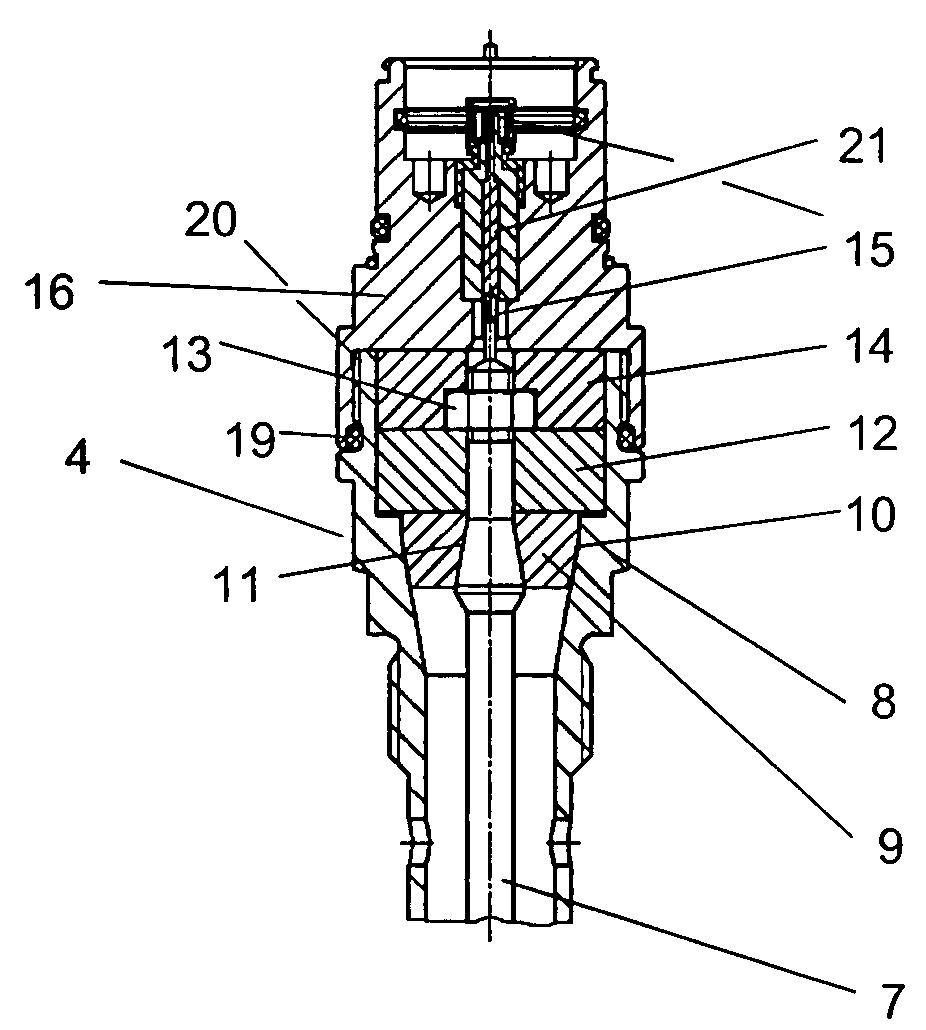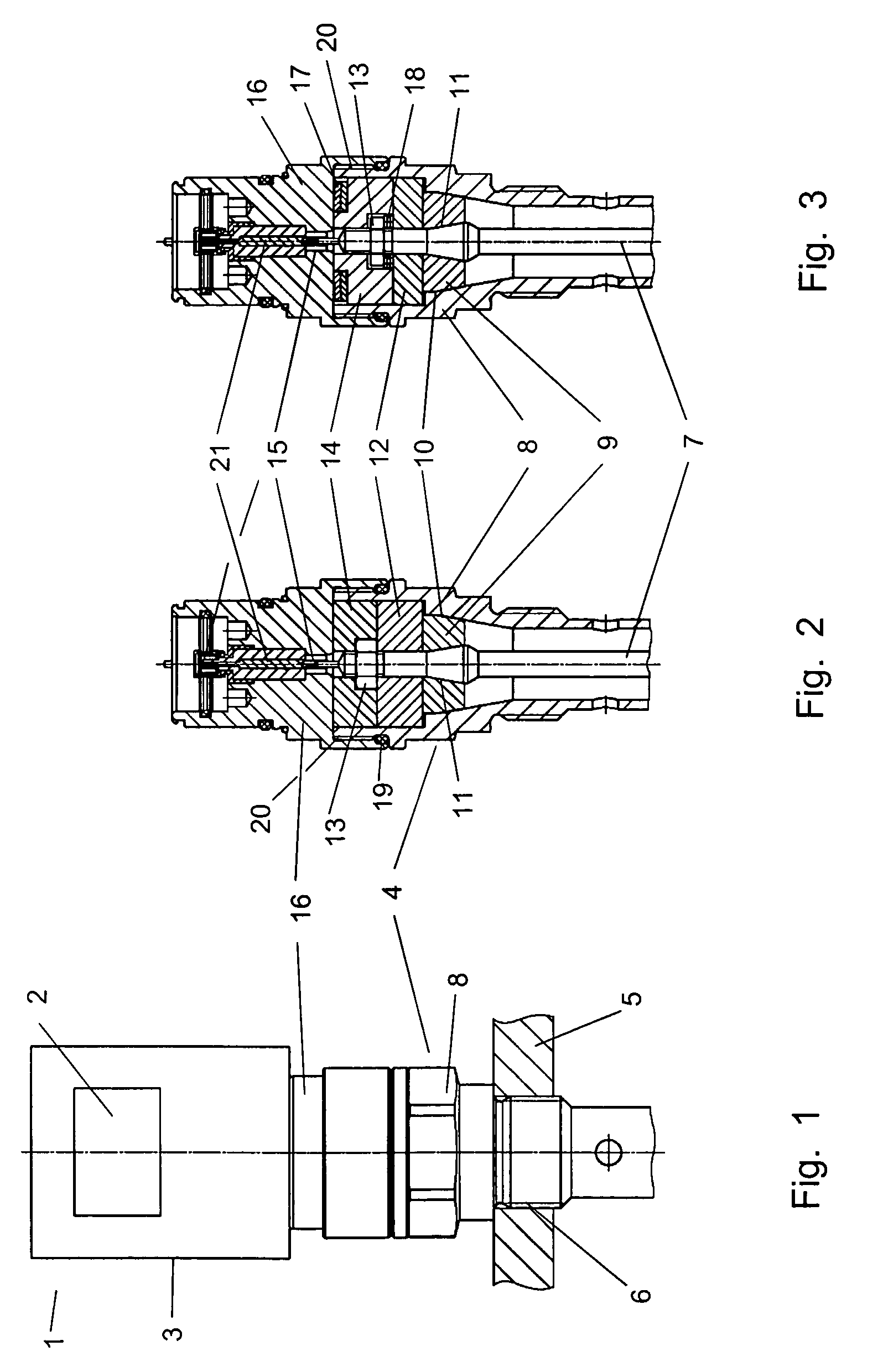Coaxial gapless guide-through assembly for a filing level sensor
a level sensor and guide-through technology, applied in the direction of liquid bottling, packaging under special atmospheric conditions, liquid dispensing, etc., can solve the problems of inability to adapt sealing elements to filling level sensors, insensitive to filling matter build-up and attachment, and brittleness or flow, etc., to achieve low coefficient of thermal expansion, no discernible softening or melting point, good form and dimensional stability
- Summary
- Abstract
- Description
- Claims
- Application Information
AI Technical Summary
Benefits of technology
Problems solved by technology
Method used
Image
Examples
Embodiment Construction
[0035]FIG. 1 shows a filling level sensor 1, such as a TDR filling level sensor or a capacitive filling level sensor, which is fixed in a vessel wall 5. Filling level sensor 1 essentially comprises three housing portions 3, 16, 8 connected to each other. These form the actual sensor housing 3, in which sensor electronics unit 2, only schematically shown, is accommodated. This actual sensor housing 3 is connected to the connection adapter 16, for example, via a screw connection.
[0036]As can be seen from FIG. 2, connection adapter 16 comprises a solid housing portion through which an interior conductor 21 surrounded by a dielectric material is centrally passed. Interior conductor 21 of connection adapter 16 has the function to establish the electrical contact between sensor electronics 2 and interior conductor 7. To do this, interior conductor 21 of connection adapter 16 has corresponding contacting means 15 at both ends, such as sockets or plugs, in or onto which the corresponding co...
PUM
 Login to View More
Login to View More Abstract
Description
Claims
Application Information
 Login to View More
Login to View More - R&D
- Intellectual Property
- Life Sciences
- Materials
- Tech Scout
- Unparalleled Data Quality
- Higher Quality Content
- 60% Fewer Hallucinations
Browse by: Latest US Patents, China's latest patents, Technical Efficacy Thesaurus, Application Domain, Technology Topic, Popular Technical Reports.
© 2025 PatSnap. All rights reserved.Legal|Privacy policy|Modern Slavery Act Transparency Statement|Sitemap|About US| Contact US: help@patsnap.com


